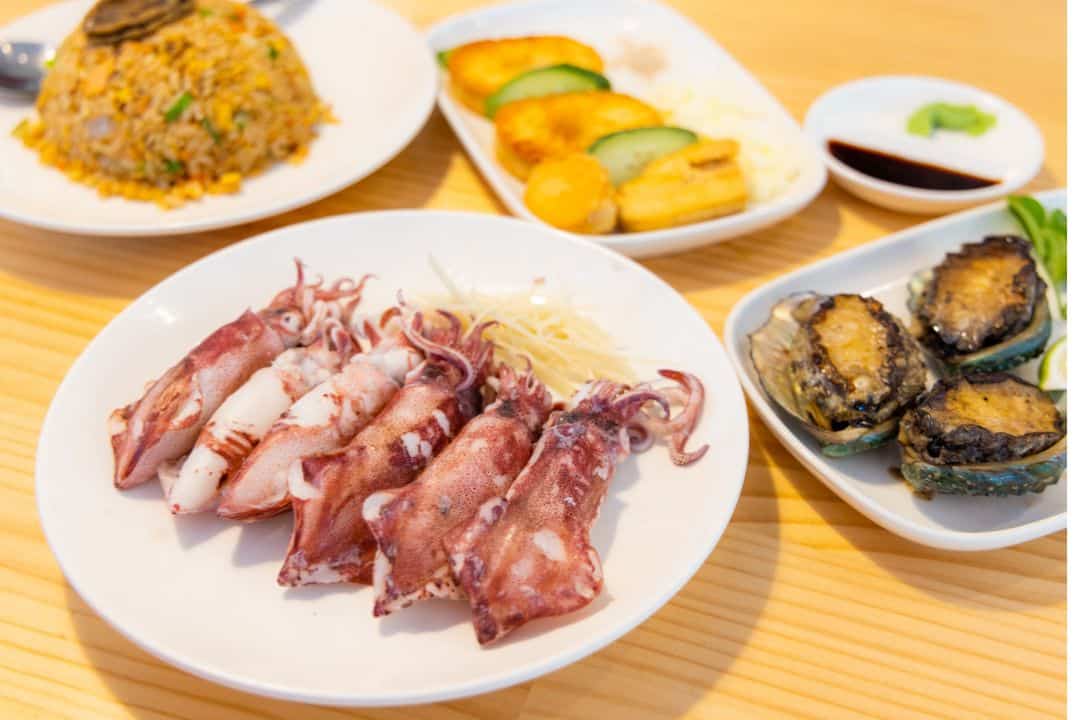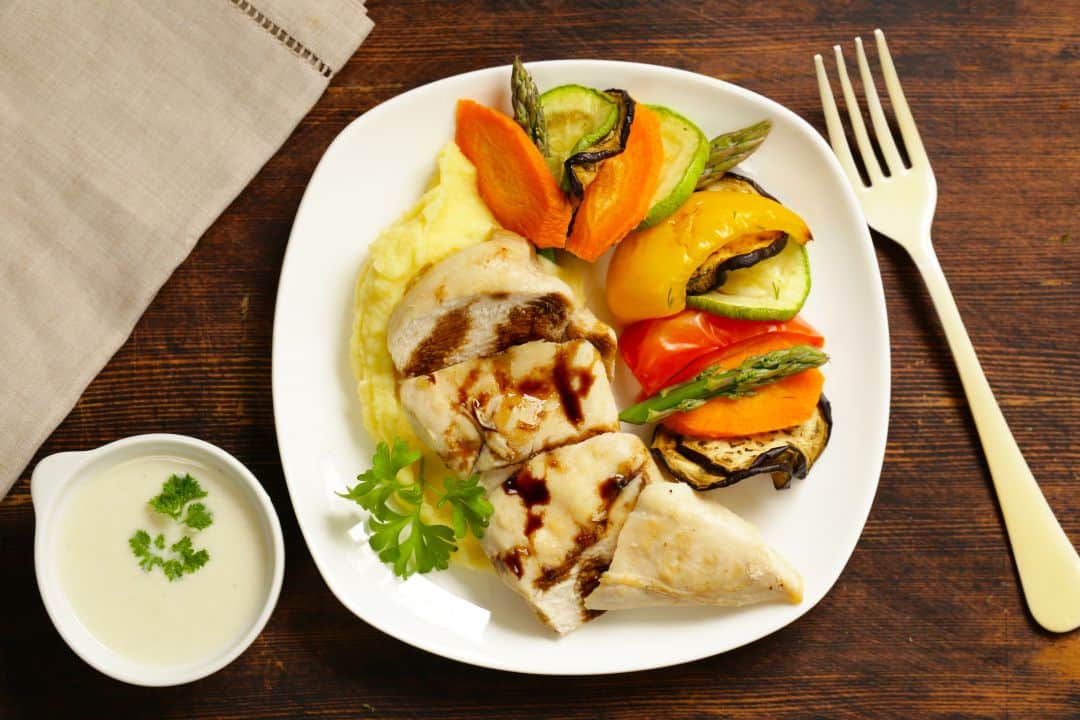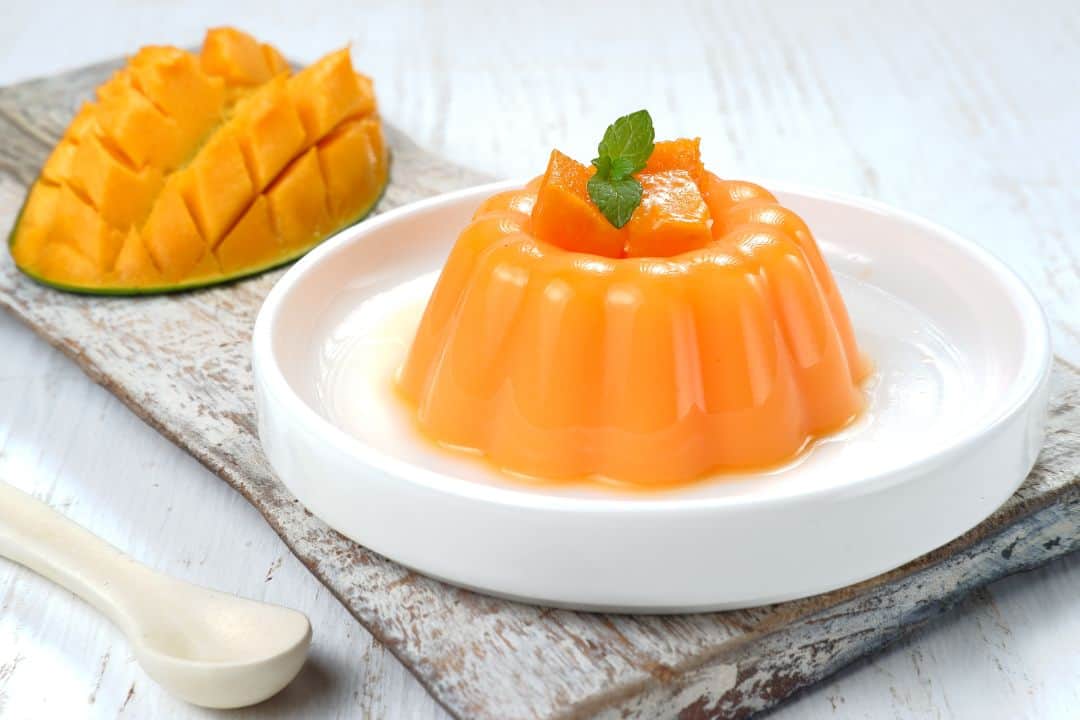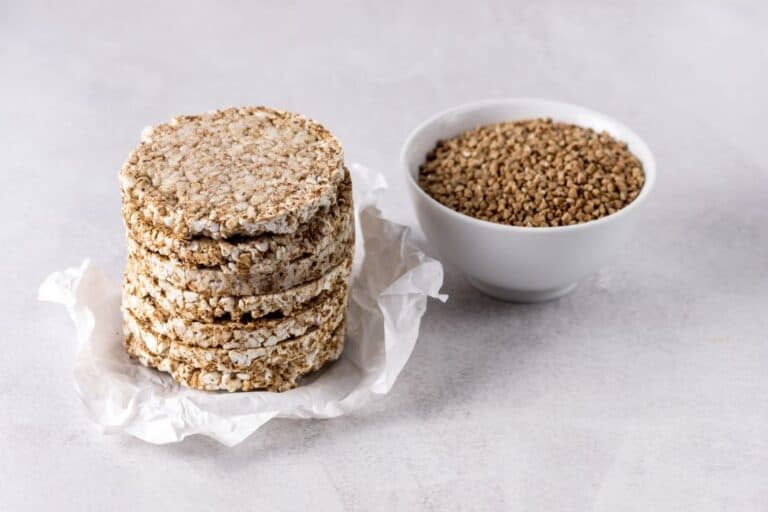Gluten Free Chinese Food List: What Best to Order
Navigating the world of Chinese cuisine with a Gluten Free Chinese Food List can be a valuable resource for individuals with a gluten allergy or non-celiac gluten sensitivity.
A gluten allergy is an autoimmune disorder where the body reacts negatively to gluten, a protein found in wheat, barley, and rye.
Those affected must adhere to a strict gluten-free diet, which can be difficult given the prevalence of gluten in many traditional Chinese dishes.
Fortunately, many local Chinese restaurants now offer a gluten-free menu to cater to the gluten-free needs of their patrons. When dining at your favorite Chinese restaurant or ordering Chinese takeout, you must inquire about gluten-free menu items and ensure the staff knows the risk of cross-contamination.
Cross-contamination can occur when gluten-free foods come into contact with gluten-containing foods, utensils, or surfaces, potentially causing adverse reactions in those with gluten sensitivities.
Some of the best gluten-free Chinese food options include mei fun, made from rice noodles, and dishes with white sauce, as opposed to dark sauces like soy sauce, which typically contain gluten.
Kung Pao Chicken and sour chicken recipes can be made gluten-free, substituting traditional ingredients like soy sauce with gluten-free alternatives. Many local restaurants, including chains like PF Chang, are attentive to these substitutions, making it easier for those with gluten sensitivities to enjoy their favorite dishes.
Several gluten-free substitutes are available for those who enjoy making Chinese recipes at home. Several gluten-free substitutes are excellent alternatives to their gluten-containing counterparts.
Rice paper can make gluten-free spring rolls, and mung beans are a good substitute for egg noodles. Additionally, air fryers can create crispy textures without the need for wonton wrappers, which typically contain gluten.
It’s also a good idea to look for naturally gluten-free dishes, such as those featuring rice or mei fun. Dim sum can be a tricky menu item, as it often involves dumplings made with wheat-based wrappers, but some variations made with rice flour are safe for those avoiding gluten.
Egg rolls and Lo Mein are usually not gluten-free, as they contain wheat-based wrappers and noodles, respectively. Chow mein noodles are also typically made from wheat.
However, the creative use of gluten-free substitutes and separate spoons and utensils to avoid cross-contamination can make it possible to enjoy modified versions of these dishes.
While fortune cookies are a popular end to a Chinese meal, they usually contain gluten. However, less fiber in the diet due to the lack of gluten can be balanced by incorporating a variety of gluten-free grains and vegetables in meals.
Social media can be a helpful resource for finding gluten-free Chinese food options and recipes. Many people share their experiences and recommendations for gluten-free items at Chinese restaurants, and some even post homemade gluten-free Chinese takeaway recipes.
Connecting with others who have similar dietary restrictions can provide valuable insights and support.
In summary, although the journey to finding gluten-free Chinese food can be challenging due to the presence of gluten in many traditional Chinese dishes and sauces, numerous options and substitutes are available.
Individuals with gluten sensitivities can still enjoy a variety of delicious Chinese cuisine by being vigilant about cross-contamination, utilizing gluten-free ingredients, and exploring gluten-free menus at local restaurants.
Safest Gluten-Free Dishes to Order
Plenty of delicious chicken recipes are available for takeaway if you’re following a gluten-free diet but still want to enjoy
Chinese cuisine. Here are some recommendations for safe gluten-free food recipes you can order without worry, including delightful chicken dishes you can enjoy as a takeaway.
Steamed Vegetables and Stir-Fried Meats

Steamed vegetables and stir-fried meats are your best bet for food. Don’t forget to use gluten-free tamari soy sauce in your recipe. These gluten-free dishes are prepared using simple cooking methods and include a free tamari soy sauce option in the recipe.
Opt for a colorful plate of steamed broccoli, carrots, and bok choy, or savor the flavors of tender stir-fried chicken or beef with fresh vegetables. Don’t forget to try our recipe that includes free tamari soy sauce for an extra flavor.
And if you’re in a hurry, you can always choose our takeaway option for a quick and convenient meal. These food dishes provide a healthy dose of nutrients and satisfy your taste buds. Try out this delicious recipe for a nutritious and tasty takeaway.
Seafood Dishes without Sauce

Seafood lovers rejoice! Many seafood dishes in Chinese cuisine can be safely enjoyed on a gluten-free diet. If you’re looking for a delicious recipe or a quick takeaway, Chinese seafood dishes are a great option.
When it comes to seafood, a popular recipe is to cook fresh fish, shrimp, scallops, and crab with minimal seasoning or gluten-free sauces. This allows the natural flavors of the seafood to shine through.
It’s an excellent takeaway for those looking for a delicious and healthy meal option. Grilled or steamed fish topped with ginger and scallions is a popular recipe choice among those looking for a gluten-free takeaway.
If you’re looking for a delicious recipe, try making Szechuan-style prawns or garlic butter shrimp.
Remember to ask if the sauces used are gluten-free before ordering your takeaway.
Traditional Gluten-Free Chinese Dishes
Chinese cuisine offers a variety of traditional gluten-free recipes that are naturally gluten-free when prepared correctly. If you’re looking for a delicious takeaway, Chinese cuisine is a great option.
Peking duck is one such dish that those avoiding gluten can enjoy. The takeaway is that Peking duck is gluten-free. The takeaway from this dish is the crispy skin paired with succulent meat, a treat for your taste buds.
Another option is a hot pot, where you can customize your meal by choosing from an array of fresh ingredients like thinly sliced meats, tofu, mushrooms, and vegetables.
Just make sure to request modifications like using wheat-free soy sauce or skipping certain ingredients that may contain hidden sources of gluten.
Beware of Hidden Gluten in Sauces
While many Chinese dishes can be made gluten-free, it is important to be cautious about certain sauces that may contain gluten. Soy sauce, a staple in Chinese cooking, often contains wheat as an ingredient.
However, gluten-free alternatives are available, such as tamari or coconut aminos. Be sure to ask your server about the sauce used in the dishes you want and request gluten-free options if necessary.
Tips for Ordering Gluten Free in Chinese Restaurants
Clear communication is vital. Conversing with the restaurant staff is important to ensure your dietary needs and restrictions are met. Here are some tips to help you navigate the menu and make informed choices:
Ask Questions About Ingredients and Cooking Methods
To ensure your meal is gluten-free, don’t hesitate to ask questions about ingredients and cooking methods. Inquire about specific dishes or sauces containing gluten and ask if they can be modified or substituted.
Find out if soy sauce or other condiments used in the words are gluten free alternatives.
Be Aware of Cross-Contamination Risks
Cross-contamination is a common concern, especially in Chinese restaurants where many ingredients are shared across different dishes. Ask the staff about their practices to prevent cross-contamination. Find out if separate utensils or cooking surfaces are used for gluten-free meals or if there’s a risk of contamination during preparation.
Check Online Reviews or Contact Restaurants in Advance
Before heading out to a Chinese restaurant, checking online reviews from other customers who have ordered gluten-free meals there can be helpful. Look for feedback on how well they accommodate special dietary requests.

If possible, contact the restaurant directly in advance and inquire about their ability to cater to gluten-free needs.
By following these tips, you can enjoy a delicious meal while staying true to your gluten free lifestyle. Remember, each restaurant may have different practices and levels of understanding.
Inquire about Separate Cooking Utensils and Preparation Areas
When ordering gluten-free meals at Chinese restaurants, it is essential to inquire about using separate cooking utensils, pans, and dedicated preparation areas. By doing so, you can minimize the risk of cross-contamination.
Some restaurants may have designated gluten-free areas or specific equipment for preparing gluten-free dishes.
Potential Sources of Cross-Contamination
It’s essential to be aware of potential sources of cross-contamination that can occur in restaurant kitchens. Shared fryers, for example, pose a risk as they may be used for wheat-based products and gluten-free ingredients.
This means that even if your food doesn’t contain gluten-containing ingredients, it could still come into contact with traces of gluten during frying.
Cutting boards are another area where cross-contamination can occur. If cutting boards are used interchangeably between wheat-based products and gluten-free ingredients without proper cleaning, there is a high chance of cross-contamination.
It is crucial to ask if separate cutting boards are used for preparing gluten-free meals.
Tips for Minimizing Cross-Contamination Risks
To further reduce the risk of cross-contamination when ordering gluten-free Chinese food:
- Opt for sauces made from scratch using fresh ingredients rather than pre-packaged spices that may contain hidden sources of gluten.
- Ask about the spices and seasonings used in your dish, as some blends may contain added wheat flour or other forms of hidden glutens.
- Request that your meal be cooked with fresh oil rather than oil that may have been used to fry gluten-containing foods.
- Carefully read labels and ask questions about ingredients, especially if you are unsure about specific items or their gluten-free status.
- Consider substitutions for dishes that typically contain gluten, such as replacing wheat-based noodles with rice noodles or opting for steamed vegetables instead of breaded and fried options.
By being proactive and asking the right questions, you can enjoy a delicious gluten-free Chinese meal while minimizing the risk of cross-contamination.
Homemade Gluten-Free Chinese Food Recipes
You might think your options are limited if you’re a fan of Chinese cuisine but follow a gluten-free diet. However, fear not! We’ve covered you with some easy-to-follow recipes for homemade versions of popular Chinese dishes made with gluten-free ingredients.
Get ready to satisfy those cravings without compromising your dietary needs.
Fried Rice with Tamari Sauce

Ingredients:
- 2 cups cooked jasmine rice (preferably left overnight in the fridge)
- 1 cup mixed vegetables (carrots, peas, and corn)
- 2 green onions, thinly sliced
- 1/2 cup diced cooked chicken or tofu
- 2 eggs, lightly beaten
- 3 tablespoons tamari sauce (gluten-free soy sauce)
- 1 tablespoon sesame oil
- 1 teaspoon minced garlic
- 1/2 teaspoon minced ginger
- Salt and pepper to taste
- Sesame seeds and additional sliced green onions for garnish
Method of Cooking:
- Prepare Ingredients: Start by preparing all your ingredients. Dice the vegetables, cook the chicken or tofu, and have your cold rice ready.
- Cook Eggs: Heat a large skillet or wok over medium-high heat. Add a bit of sesame oil, pour in the beaten eggs, and scramble them until fully cooked. Remove the eggs from the skillet and set them aside.
- Sauté Vegetables: In the same skillet, add a bit more sesame oil, minced garlic, and ginger—Sauté for about 30 seconds or until fragrant. Add the mixed vegetables and cook until they are tender.
- Add Rice and Protein: Add the cold rice and diced cooked chicken or tofu to the skillet. Use a spatula to break up any clumps of rice and mix everything well.
- Season with Tamari Sauce: Pour the tamari sauce over the rice mixture. Stir well to ensure the rice and ingredients are evenly coated with the sauce.
- Add Scrambled Eggs and Green Onions: Add the scrambled eggs and sliced green onions to the skillet. Mix well.
- Season and Garnish: Season with salt and pepper to taste. Garnish with additional green onions and sesame seeds.
- Serve: Serve the fried rice hot as a main or side dish.
Comment:
This Fried Rice with Tamari Sauce is delicious! The tamari sauce adds a wonderful umami flavor, making the dish savory and satisfying. The vegetables and protein make it a balanced meal, and it’s great to know it’s gluten-free!
This recipe is a keeper, and I can’t wait to make it again!
Steamed Vegetables and Chicken

Ingredients:
- 2 chicken breasts, boneless and skinless
- 1 cup broccoli florets
- 1 cup baby carrots, halved
- 1 red bell pepper, sliced
- 1 yellow bell pepper, sliced
- 1 zucchini, sliced
- 2 tablespoons olive oil
- Salt and pepper to taste
- 1 lemon, sliced (for garnish)
- Fresh parsley, chopped (for garnish)
Method of Cooking:
- Preparation: Start by washing and chopping all your vegetables. Season the chicken breasts with salt and pepper on both sides.
- Steam Vegetables: In a steamer or a pot with a steaming basket, add water to the bottom (ensuring the water does not touch the bottom of the basket) and bring to a boil. Place the broccoli, carrots, bell peppers, and zucchini in the basket. Cover and steam the vegetables until they are tender but still crisp, about 5-7 minutes.
- Steam Chicken: Add water to the bottom and bring to a boil in a separate steamer or using a different steaming basket. Place the seasoned chicken breasts in the basket. Cover and steam until the chicken is cooked through, about 15-20 minutes, depending on the thickness of the breasts. Check for doneness by ensuring the internal temperature of the chicken reaches 165°F (74°C).
- Drizzle Olive Oil: Once the vegetables and chicken are cooked, arrange them on a serving platter. Drizzle olive oil over the steamed vegetables and chicken for added flavor.
- Garnish and Serve: Garnish with lemon slices and fresh parsley. Serve immediately while hot, either on its own or with a side of cooked quinoa, rice, or your preferred grain.
Comment:
This Steamed Vegetables and Chicken dish is a true delight! The vegetables retain vibrant colors and crunch, while the chicken is tender and juicy. The drizzle of olive oil brings everything together, and the lemon and parsley add a refreshing touch.
It’s a simple, healthy, and flavorful meal perfect for any day of the week!
Egg Drop Soup

Ingredients:
- 4 cups chicken broth
- 2 eggs, lightly beaten
- 1 tablespoon cornstarch (dissolved in 2 tablespoons of water)
- 1 green onion, thinly sliced
- 1/4 teaspoon white pepper (optional, for taste)
- Salt, to taste
- Sesame oil for drizzling (optional)
Method of Cooking:
- Prepare Broth: Bring the chicken broth to a simmer over medium heat in a medium-sized pot.
- Thicken Broth: Stir in the dissolved cornstarch mixture to the simmering broth, stirring continuously, until the soup slightly thickens.
- Add Eggs: Slowly pour the lightly beaten eggs into the soup in a steady stream while stirring the soup in a circular motion. The eggs will cook almost immediately and form silky ribbons throughout the soup.
- Season Soup: Season the soup with salt and white pepper to taste. If you prefer a spicier kick, you can add a bit more white pepper.
- Garnish and Serve: Pour the soup into bowls, garnish with sliced green onions, and drizzle with a little sesame oil if desired. Serve immediately while hot.
Positive Comment:
This Egg Drop Soup is incredibly comforting and flavorful! The soup is silky and rich, with the eggs creating a lovely texture. The green onions add a fresh touch, and the hint of sesame oil elevates the overall flavor.
It’s a quick and easy recipe that delivers a delicious and warming bowl of soup every time!
Homemade Gluten-Free Sauces
To truly elevate your gluten-free Chinese dish, it is essential to have some homemade sauces in your arsenal. You can easily make gluten-free versions of sauces using gluten-free ingredients like teriyaki sauce, oyster sauce, duck sauce, and sweet and sour sauce.
Such as tamari soy sauce or coconut aminos as the base. These sauces will add depth and complexity to your dishes without compromising taste.
By following these homemade gluten-free Chinese food recipes, you can enjoy all the flavors you love while adhering to your dietary restrictioWhether you are craving fried rice, steamed vegetables with chicken, or classic dishes like crispy chili beef or egg drop soup, plenty of options are available to satisfy your appetite.
Gluten Free Noodle Options and Rice Varieties
In Chinese cuisine, various gluten-free noodle options and rice varieties can satisfy your cravings without compromising your dietary needs. Let’s explore some of these alternatives:
Types of Noodles Made from Alternative Flours
You have several choices that are commonly used in Chinese cooking. These include:
- Rice Noodles: These thin and translucent noodles are a popular gluten-free option made from rice flour. They come in different widths and can be used in stir-fries, soups, or cold salads.
- Bean Thread Noodles: Also known as cellophane noodles or glass noodles, these delicate strands are made from mung bean starch. When cooked, they have a slightly chewy texture and work well in dishes like spring rolls or stir-fried vegetables.
- Sweet Potato Starch Noodles: These thick and chewy noodles are made from sweet potato starch. They have a unique flavor and can be used in hot pots or stir-fried dishes for added texture.
While wheat-based noodles may not be suitable for those following a gluten-free diet, it is essential to note that not all Asian noodles contain gluten.
Opting for alternative flour like rice flour or sweet potato starch, you can still enjoy delicious noodle dishes without worrying about gluten.
Gluten-Free Rice Varieties Used in Chinese Cuisine
Rice is a staple ingredient in Chinese cuisine, and luckily for those avoiding gluten, many rice varieties are naturally free of this protein. Some common gluten-free rice options include:
- Jasmine Rice: Known for its fragrant aroma and fluffy texture, it is widely used in Chinese cooking. It pairs well with various meat and vegetable dishes or serves as a fried rice base.
.
- Sticky Rice (Glutinous Rice): Despite its name, sticky rice contains no gluten. It is a type of rice that becomes sticky when cooked,
perfect for dishes like zongzi (sticky rice dumplings) or sweet rice desserts.
- Brown Rice: While white rice is the more traditional choice in Chinese cuisine, some restaurants offer brown rice as a healthier alternative. Brown rice retains the bran and germ layers, providing additional fiber and nutrients.
In addition to these options, some restaurants may also offer gluten-free noodles made from alternative grains like quinoa or buckwheat. These options provide variety for those with specific dietary requirements.
By incorporating these gluten-free noodle options and rice varieties into your Chinese meals, you can enjoy a wide range of flavors and textures while adhering to your dietary needs.
Exploring Delicious Gluten Free Chinese Desserts
Introducing Traditional Chinese Desserts: Mango Pudding and Almond Jelly

If you have a sweet tooth and follow a gluten-free diet, you’ll be delighted to know that there are traditional Chinese desserts that are naturally gluten-free. One such dessert is mango pudding, a creamy and refreshing treat made with fresh mangoes, gelatin or agar-agar (a vegan alternative), and sugar.
It’s often served chilled and garnished with fresh fruit.
Another popular gluten-free Chinese dessert is almond jelly. This delicate and silky dessert is made from almond milk from ground almonds mixed with water. The mixture is then sweetened with sugar and thickened with agar-agar or gelatin.
Almond jelly has a subtle nutty flavor and can be enjoyed independently or paired with fruits like lychee or longan.
Homemade Gluten-Free Versions of Popular Desserts: Sesame Balls and Coconut Milk Tapioca Soup
Sesame Balls Recipe

Ingredients:
- 1 cup sweet rice flour (glutinous rice flour)
- 1/3 cup water
- 1/4 cup red bean paste (or your preferred filling)
- 1/2 cup sesame seeds
- Vegetable oil for frying
- 1/4 cup granulated sugar (optional for extra sweetness)
Method of Cooking:
- Prepare Dough: Combine the sweet rice flour and water in a mixing bowl. Mix well until a smooth dough forms. If the dough is too sticky, add a bit more rice flour. If it’s too dry, add a bit more water.
- Divide and Fill: Divide the dough into small, equal-sized balls (about the size of a golf ball). Flatten each ball in the palm of your hand and place a small amount of red bean paste in the center. Fold the edges of the dough over the filling and seal, then roll it back into a ball shape.
- Coat with Sesame Seeds: Roll each ball in sesame seeds until fully coated, pressing lightly to ensure the seeds adhere to the dough.
- Heat Oil: In a deep frying pan, heat enough vegetable oil to submerge the sesame balls, approximately 2 inches deep, to 350°F (180°C).
- Fry Sesame Balls: Carefully lower the sesame balls into the hot oil, a few at a time, making sure not to overcrowd the pan. Fry until golden brown and crispy, turning occasionally to ensure even cooking, for about 4-5 minutes.
- Drain and Cool: Remove the sesame balls from the oil using a slotted spoon and drain them on paper towels. Roll them in granulated sugar for extra sweetness, if desired, while still warm.
- Serve: Serve the sesame balls warm and enjoy their crispy, sweet, and chewy texture!
Comment:
These Sesame Balls are delightful! The exterior is perfectly crispy, while the inside is sweet and chewy, with the red bean paste adding a wonderful depth of flavor. The sesame seeds give a nice nutty touch, and rolling them in sugar adds a layer of sweetness.
They’re a fantastic treat that brings a smile with every bite!
Coconut Milk Tapioca Soup Recipe

Ingredients:
- 1/2 cup small pearl tapioca
- 1 can (400ml) coconut milk
- 2 cups water
- 1/3 cup sugar (adjust to taste)
- 1/4 teaspoon salt
- 1/2 teaspoon vanilla extract
- Fresh fruit or fruit compote for garnish (optional)
Method of Cooking:
- Soak Tapioca Pearls: Rinse the tapioca pearls under cold water. Soak them in a bowl with enough water to cover for about 30 minutes.
- Cook Tapioca Pearls: Drain the soaked tapioca pearls and transfer them to a medium-sized pot. Add 2 cups of water and bring to a boil. Reduce the heat to low and simmer until the pearls become translucent about 15-20 minutes. Stir occasionally to prevent sticking.
- Add Coconut Milk and Sweetener: Once the tapioca pearls are cooked, add the coconut milk, sugar, and salt to the pot. Stir well to combine and dissolve the sugar. Allow the soup to simmer for 10-15 minutes, stirring occasionally.
- Add Vanilla Extract: Remove the pot from the heat and stir in the vanilla extract. Mix well to incorporate the vanilla flavor throughout the soup.
- Serve: Serve the Coconut Milk Tapioca Soup warm or chilled, depending on your preference. You can garnish it with fresh fruit or fruit compote for added flavor and texture.
Comment:
This Coconut Milk Tapioca Soup is a true delight! The creamy coconut milk pairs wonderfully with the chewy texture of the tapioca pearls, creating a harmonious blend of flavors and textures.
The hint of vanilla adds a lovely aromatic touch, and the option to garnish with fresh fruit brings a refreshing element to the dish. It’s a versatile recipe that can be enjoyed warm or cold, making it perfect for any season!
Alternative Ingredients and Substitutions: Making Classic Chinese Desserts Safe for Gluten-Free Diets
There are alternative ingredients and substitutions you can use. Here are a few examples:
- Replace wheat-based dough with sweet potato or taro dough for dumplings or buns.
- Use coconut milk instead of regular dairy milk in recipes that call for milk.
- Substitute cornstarch for wheat flour as a thickening agent in sauces and puddings.
- Opt for gluten-free soy sauce or tamari instead of traditional soy sauce, which often contains wheat.
You can enjoy your favorite Chinese desserts without worrying about gluten by incorporating these alternative ingredients and substitutions.
Enjoying Gluten Free Chinese Cuisine
We started by discussing the safest gluten-free dishes to order in Chinese restaurants and providing helpful tips for ordering and avoiding cross-contamination.
We also delved into homemade gluten-free Chinese food recipes and highlighted the options for gluten-free noodles and rice varieties. Lastly, we explored the realm of delicious gluten free Chinese desserts.
With this knowledge, you can confidently navigate a Chinese restaurant menu while adhering to a gluten-free diet. Whether you dine out or cook at home, there are plenty of options to satisfy your cravings for authentic Chinese flavors without compromising your dietary restrictions.
So go ahead, explore the world of gluten free Chinese cuisine, and indulge in the delectable flavors it has to offer. Remember to share your experiences with others seeking similar information, as together, we can create a community that supports and empowers those following a gluten free lifestyle.
FAQs – Gluten Free Chinese Food List
Can I trust that a dish labeled “gluten-free” is truly safe?
👉 While many restaurants strive to provide accurate labeling for their gluten-free dishes, it is always wise to exercise caution. Cross-contamination can occur in kitchens where wheat-based products are prepared alongside gluten-free items.
To ensure your safety, you should communicate directly with restaurant staff about your dietary needs and inquire about their practices regarding cross-contamination prevention.
Are there any specific ingredients commonly used in Chinese cuisine that contain gluten?
👉 Some common ingredients used in traditional Chinese cooking may contain gluten. Soy sauce is an example, as most commercial soy sauces contain wheat as an ingredient.
It’s advisable to look for tamari or labeled gluten-free soy sauce alternatives when preparing or ordering dishes that traditionally use soy sauce.
Can I find pre-packaged gluten-free versions of popular Asian sauces?
👉 Several brands produce pre-packaged gluten-free versions of popular Asian sauces, including soy sauce, hoisin sauce, and oyster sauce. These can be found in specialty grocery stores or online retailers catering to dietary restrictions.
Reading labels carefully is crucial to ensure the products are indeed gluten-free.
Are there any Chinese dishes that are typically gluten-free?
👉 Yes, several Chinese dishes are naturally gluten-free. Some examples include steamed fish with ginger and scallions, stir-fried vegetables, hot and sour soup (when thickened with cornstarch instead of wheat flour), and Sichuan-style boiled beef.
However, it is important to remember that variations may exist between restaurants and regions, so always double-check with the establishment before ordering.
Can I request modifications or substitutions to make a dish gluten-free?
Absolutely! Many Chinese restaurants are accommodating. Don’t hesitate to ask for modifications or substitutions to make a dish gluten-free. For example, you can request steamed rice instead of fried rice or ask your dish to be prepared without soy sauce if it contains wheat-based ingredients.
Clear communication with the staff will help ensure an enjoyable dining experience while meeting your dietary needs.

Born and raised in a family of foodies, Georgia’s passion for cuisine was nurtured from a young age as she learned the intricacies of flavor and texture from her grandmother’s kitchen. As an adult, this early fascination blossomed into a full-fledged love affair with the culinary world.







